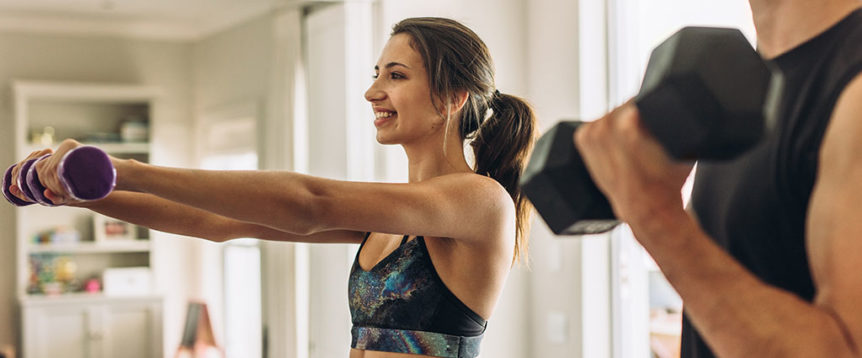Modern workouts are a bit of an alphabet soup—HIIT, HIRT, AMRAP and the like.
And now here’s another to add to the mix: PHA workouts, or Peripheral Heart Action training. PHA is actually not new, but rather a resurrected workout trend that first came on the scene in the 1940s and surged in popularity in the 1960s.
Try a 30-minute PHA workout at home:
PHA (not to be confused with a certain popular Vietnamese dish) is a full-body, circuit-style strength workout with the opposite goal of HIIT and HIRT workouts: It aims to keep your heart rate in a consistent, fat-burning zone, just as with moderate cardio workouts like fast walking and moderate jogging or cycling—but with the added benefit of simultaneous, full-body strength training. PHA alternates between upper- and lower-body exercises to prevent muscle fatigue, allowing you to maintain consistent effort throughout the training session.
Here’s how it works:
1. Choose six exercises: two upper-body, two lower-body, one core.
2. Select your reps or time. For example: 8 to 10 reps or one minute of work per exercise.
3. Find the right amount of resistance. If you’re using dumbbells or other equipment, choose weights you can sustain for the duration of the exercise without working to failure or getting overly fatigued—but that are heavy enough to moderately raise your heart rate.
4. Work through the six exercises, alternating between upper- and lower-body moves and ending with core. Don’t rest between exercises unless you’re out of breath.
5. Repeat the circuit three to six times.
The goal is to keep your heart rate moderately elevated but steady, boosting both your strength and your cardio, while also burning fat. At least one study, published in the European Journal of Applied Physiology, found that PHA did just that, improving both muscular strength and cardio fitness over a three-month period. Put PHA to the test yourself, by adding one or two PHA sessions to your workout mix each week for big heart and muscle gains in minimal time.

